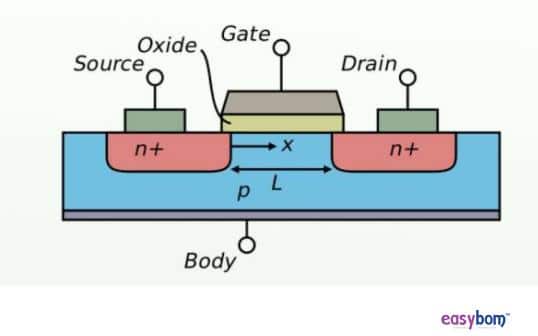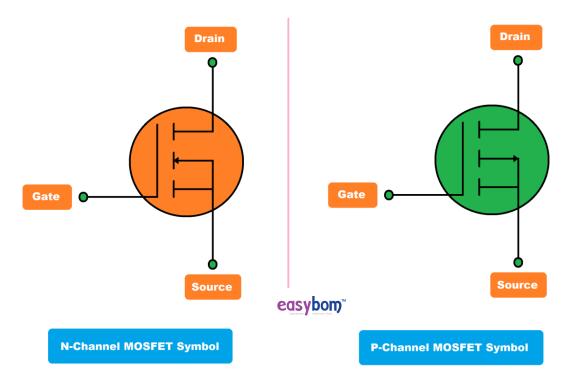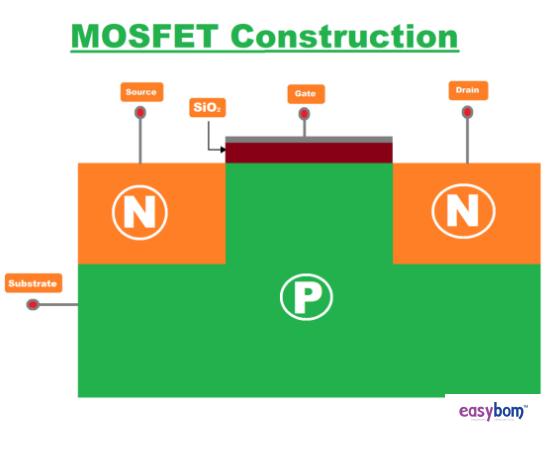What is MOSFET?
A MOSFET transistor is a type of power switch that can control the amount of current flowing in an electric circuit. It has two terminals called gate and drain, with a third terminal called source. The gate terminal is connected to a voltage source while the drain and source terminals are connected to different circuits or sources. It has many uses in electronics, such as switching high-power currents on and off, controlling the flow of electricity for motors, or regulating the voltage output from solar cells.
Full Name
Its full name is “Metal-oxide Semiconductor Field Effect Transistor”.
Symbol
MOSFET symbol
Construction
In N-type MOSFET two doped N regions are combined into one lightly-doped P substrate. Silicon Oxide (SiO2) layer is applied over Gate Terminal in order to provide insulation. Aluminum Probes can be used to connect Gate, Drain, and Source. The silicon dioxide(SiO2) layer makes FET and MOSFET different.
In short, it is a voltage-controlled IC because of the oxide layer. The conductivity between source and drain is determined by the voltage at Gate Terminal. The conduction path from Source(S), to Drain(D), is known as a channel. Its width is controlled in it by the Gate(G).
N-channel MOSFET interior Construction
Types
It can be further sub-divided into two types. These are the types: N-Channel MOSFET and P-Channel MOSFET.
N-Channel MOSFET
In N-Channel MOSFET a single layer of P-layers is found between two N-layers. Current flows due to negatively charged electrons.
P-Channel MOSFET
In the P-Channel MOSFET, a single N-layer exists between two P-layers. Current flows are caused by positively charged holes.
For more relevant information is here:
How does the MOSFET Work?
https://www.easybom.com/blog/a/how-does-the-mosfet-works







